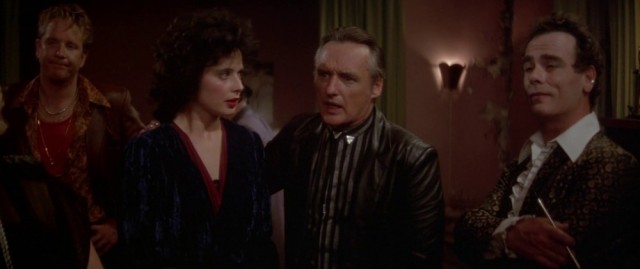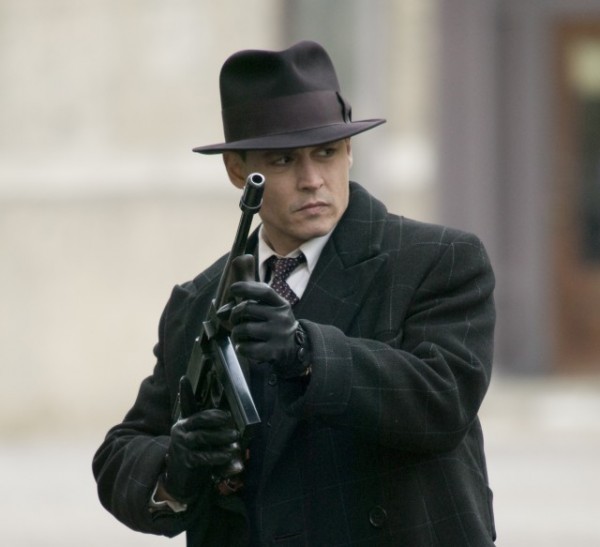
Johnny Depp stars as John Dillinger in Michael Mann’s PUBLIC ENEMIES
PUBLIC ENEMIES (Michael Mann, 2009)
BAMcinématek, BAM Rose Cinemas
30 Lafayette Ave. between Ashland Pl. & St. Felix St.
Monday, February 15, 5:00 & 8:00
Series continues through February 16
718-636-4100
www.bam.org
www.publicenemies.net
 In the early years of talkies, around the time of the Great Depression, Hollywood — and America — fell in love with gangsters and gangster pictures. Edward G. Robinson, Paul Muni, and James Cagney became stars in such films as Little Caesar, Scarface, and Public Enemy. In 1967, right around the Summer of Love, the ultraviolent, highly stylized Bonnie and Clyde reinvigorated the genre, casting the notorious thieves as the can’t-miss glamorous duo of Faye Dunaway and Warren Beatty, followed two years later by the can’t-miss glamorous duo of Paul Newman and Robert Redford as the title characters in Butch Cassidy and the Sundance Kid. Then, in 2009, with the country deep into a recession and hot off the success of Ridley Scott’s American Gangster, powerhouse writer-director-producer Michael Mann (Thief, Miami Vice) went back to the 1930s for Public Enemies, a superb, exciting retelling of legendary bank robber and people’s hero John Dillinger.
In the early years of talkies, around the time of the Great Depression, Hollywood — and America — fell in love with gangsters and gangster pictures. Edward G. Robinson, Paul Muni, and James Cagney became stars in such films as Little Caesar, Scarface, and Public Enemy. In 1967, right around the Summer of Love, the ultraviolent, highly stylized Bonnie and Clyde reinvigorated the genre, casting the notorious thieves as the can’t-miss glamorous duo of Faye Dunaway and Warren Beatty, followed two years later by the can’t-miss glamorous duo of Paul Newman and Robert Redford as the title characters in Butch Cassidy and the Sundance Kid. Then, in 2009, with the country deep into a recession and hot off the success of Ridley Scott’s American Gangster, powerhouse writer-director-producer Michael Mann (Thief, Miami Vice) went back to the 1930s for Public Enemies, a superb, exciting retelling of legendary bank robber and people’s hero John Dillinger.
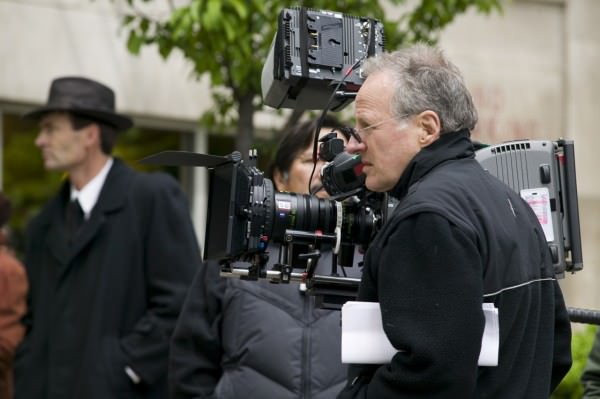
Michael Mann on the set of PUBLIC ENEMIES, which is part of BAM tribute to the writer-director-producer
Based on the book by Bryan Burrough, who praised Mann in the L.A. Times for getting so many — if not all, of course — of the facts, details, and even nuances right, Public Enemies begins with a prison break engineered by Dillinger in 1933, revealing him to be a sly, clever, and extremely smooth criminal, a violent villain impossible not to love, especially as played by Johnny Depp. (Dillinger has previously been portrayed by such actors as Warren Oates, Lawrence Tierney, and even Mark Harmon.) Dillinger puts together his crew, which includes John “Red” Hamilton (Jason Clarke), Harry Pierpont (David Wenham), and Homer Van Meter (Stephen Dorff), and falls in love with coat-check girl Billie Frechette (Marion Cotillard) as he proceeds on his well-publicized crime wave. A blustery J. Edgar Hoover (Billy Crudup) sics master G-man Melvin Purvis (Christian Bale) on Dillinger, and the two play a cat-and-mouse game through the Midwest, with appearances by such other notorious gangsters as Pretty Boy Floyd (Channing Tatum), Frank Nitti (Bill Camp), Baby Face Nelson (Stephen Graham), and Alvin Karpis (Giovanni Ribisi). The bullets keep flying as Dillinger grows bolder and bolder and Purvis gets closer and closer. Public Enemies is a classy, handsome gangster picture for the modern age, a fun trip back to a time before billion-dollar bank bailouts, when certain thieves were more like Robin Hood than Bernie Madoff. Public Enemies is screening February 15 at 5:00 & 8:00 in the BAMcinématek series “Heat & Vice: The Films of Michael Mann,” a twelve-film, twelve-day tribute to the Chicago-born producer, director, and screenwriter, who turned sixty-three on the first day of the festival, February 5. The Emmy-winning, Oscar-nominated Mann will be at BAM on February 11 ($30, 7:30) for “An Evening with Michael Mann,” a conversation moderated by Bilge Ebiri at the BAM Harvey. The series continues through February 16 with such other Mann films as Ali, Manhunter, The Insider, and The Keep.

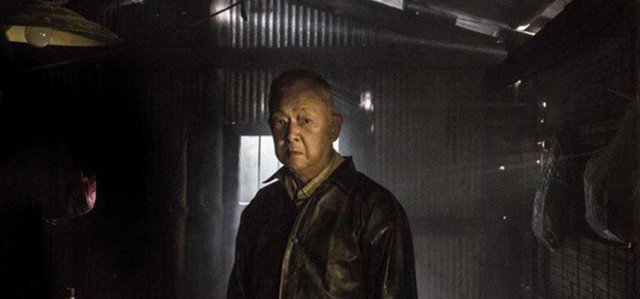
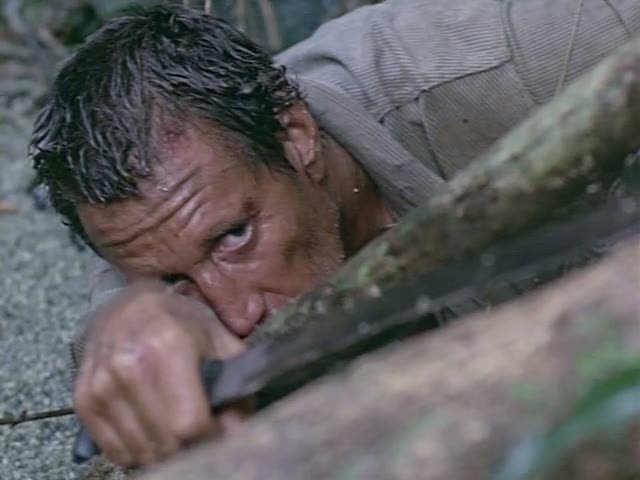
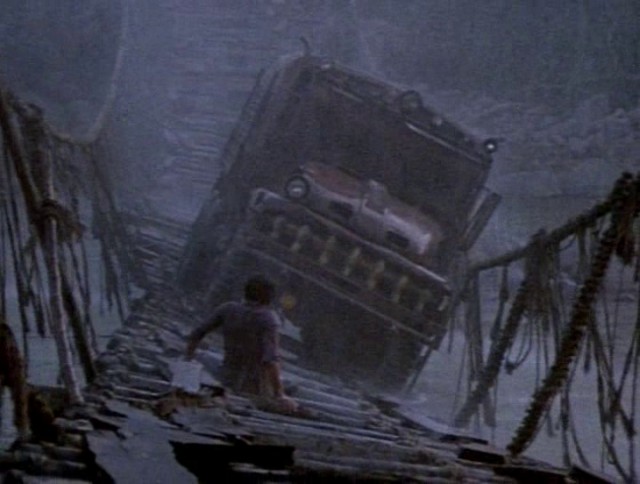
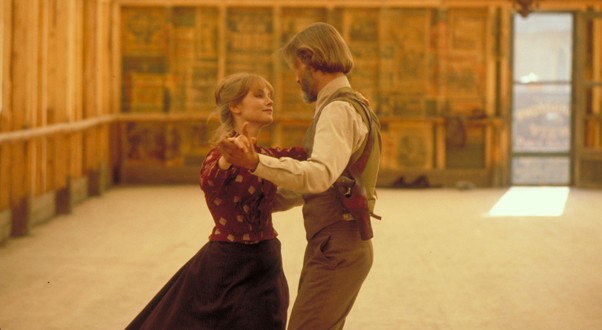
 When I was a kid in school, one of the first movies I ever reviewed was Heaven’s Gate, Michael Cimino’s brazenly overbudget famous Hollywood disaster. Incensed that professional film critics were obsessed with the meta surrounding the making of the epic Western instead of simply taking it for what it was, I was determined to treat it like any other movie, forgetting about all the behind-the-scenes gossip and tales of financial gluttony. And what I found back then was that it was a noble failure, a bold exercise in genre that had its share of strong moments but ultimately fell apart, leaving me dissatisfied and disappointed but glad I had seen it; I did not want my three-plus hours back. In fact, I probably would have checked out the rumored five-hour version if it had been shown, hoping it would fill in the many gaps that plagued the official theatrical release. More than thirty years later, Cimino’s follow-up to his Oscar-winning sophomore effort, The Deer Hunter, has returned in a 216-minute digital restoration supervised by Cimino, and it does indeed shed new light on the unfairly ridiculed work, which is still, after all this time, a noble failure. Inspired by the 1882 Johnson County War in Wyoming, the film stars Kris Kristofferson as Jim Averill, a Harvard-educated lawman hired by a group of immigrants, called “citizens,” whose livelihood — and lives — are being threatened by a wealthy cattlemen’s association run by the elitist Frank Canton (Sam Waterston). The association has come up with a kill list of 125 citizens, offering fifty dollars for each murder, a plan that has been authorized all the way up to the president of the United States. Leading the way for the cattlemen is hired killer Nate Champion (Christopher Walken), who has a particularly fierce aversion to the foreign-speaking immigrants. With a major battle on the horizon, Averill and Champion also fight for the love of the same woman, the luminous Ella Watson (Isabelle Huppert), a successful madam who soon finds herself in the middle of the controversy.
When I was a kid in school, one of the first movies I ever reviewed was Heaven’s Gate, Michael Cimino’s brazenly overbudget famous Hollywood disaster. Incensed that professional film critics were obsessed with the meta surrounding the making of the epic Western instead of simply taking it for what it was, I was determined to treat it like any other movie, forgetting about all the behind-the-scenes gossip and tales of financial gluttony. And what I found back then was that it was a noble failure, a bold exercise in genre that had its share of strong moments but ultimately fell apart, leaving me dissatisfied and disappointed but glad I had seen it; I did not want my three-plus hours back. In fact, I probably would have checked out the rumored five-hour version if it had been shown, hoping it would fill in the many gaps that plagued the official theatrical release. More than thirty years later, Cimino’s follow-up to his Oscar-winning sophomore effort, The Deer Hunter, has returned in a 216-minute digital restoration supervised by Cimino, and it does indeed shed new light on the unfairly ridiculed work, which is still, after all this time, a noble failure. Inspired by the 1882 Johnson County War in Wyoming, the film stars Kris Kristofferson as Jim Averill, a Harvard-educated lawman hired by a group of immigrants, called “citizens,” whose livelihood — and lives — are being threatened by a wealthy cattlemen’s association run by the elitist Frank Canton (Sam Waterston). The association has come up with a kill list of 125 citizens, offering fifty dollars for each murder, a plan that has been authorized all the way up to the president of the United States. Leading the way for the cattlemen is hired killer Nate Champion (Christopher Walken), who has a particularly fierce aversion to the foreign-speaking immigrants. With a major battle on the horizon, Averill and Champion also fight for the love of the same woman, the luminous Ella Watson (Isabelle Huppert), a successful madam who soon finds herself in the middle of the controversy.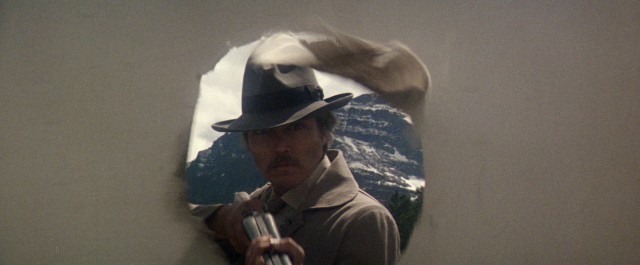
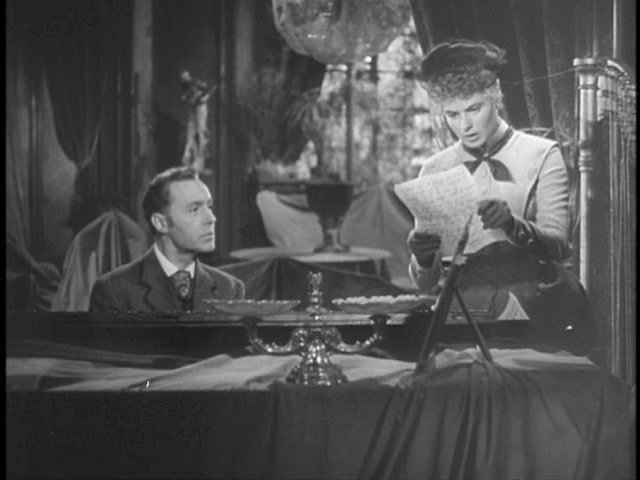
 The lovely
The lovely 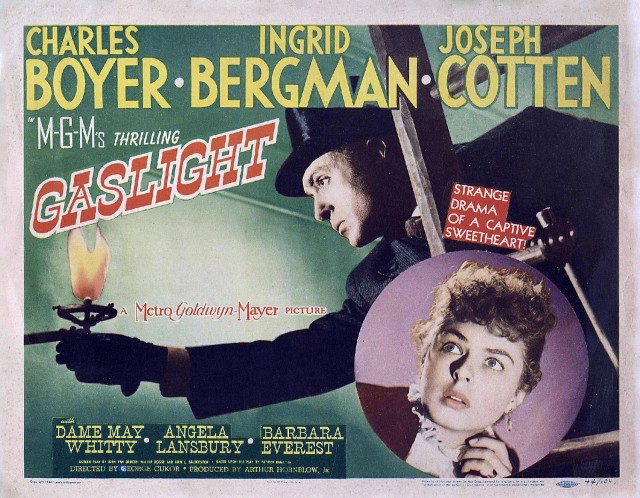
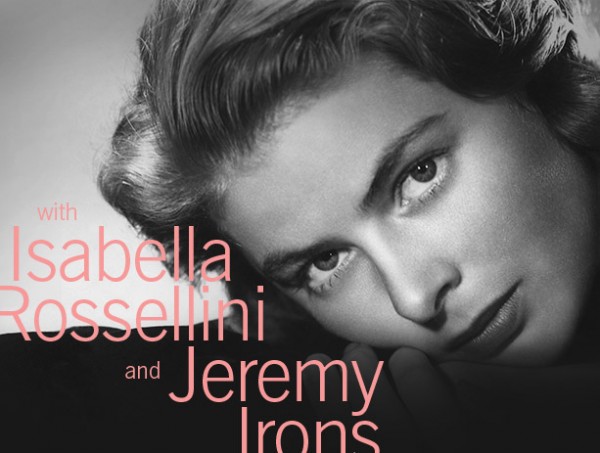
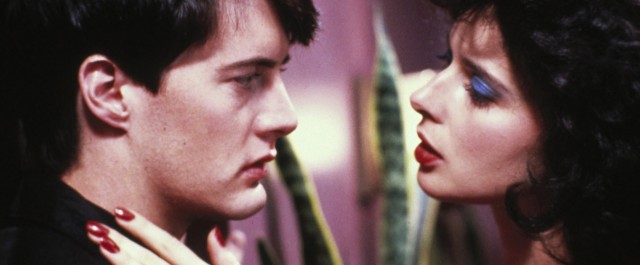
 David Lynch reveals the dark underbelly of American society in his 1986 masterpiece, Blue Velvet. Channeling Douglas Sirk and Alfred Hitchcock as well as John Badham’s War Games, Lynch creates a unique look and feel in this modern erotic noir thriller, set in the small suburban town of Lumberton, North Carolina, where danger and darkness lurk just below the surface. Lynch, who had previously made the well-received Eraserhead and The Elephant Man as well as the disastrous Dune, establishes the American theme at the heart of the movie with Blue Velvet’s opening shot, red roses in front of a white picket fence with a bright blue sky in the background. As the soundtrack plays Bobby Vinton’s 1963 hit version of the title song, Lynch then shows a red fire truck moving in slow motion down a tree-lined street, a fireman in a blue shirt on the truck, waving, standing next to a Dalmatian; children being beckoned across a street by a crossing guard; a woman (Priscilla Pointer) on her couch watching a black-and-white crime movie in which a man with a gun enters a living room; and her husband (Jack Harvey) suffering a heart attack while watering the lawn, the hose shooting out from his groin area as he lies on the ground. Lynch then zooms in on a human ear in a windy green field, the organ being devoured by bugs, followed by a billboard announcing, “Welcome to Lumberton.” That’s quite a welcome, indeed. Lynch begins the main narrative as college student Jeffrey Beaumont (Kyle MacLachlan) visits his father in the hospital, then finds that now-ant-covered ear in the field. The camera swoops in closer and closer, finally taking viewers inside the detached organ, and the story takes off, as Jeffrey and high school student Sandy (Laura Dern), the daughter of local police detective John Williams (George Dickerson), get involved with a group of demented, crazed criminals led by the deranged Frank Booth (Dennis Hopper), who are abusing singer Dorothy Vallens (Isabella Rossellini) while apparently holding her husband and son hostage. The more Jeffrey immerses himself in this maniacal, candy-coated world, the more peril he finds himself in as his relationships grow with both Sandy and Dorothy.
David Lynch reveals the dark underbelly of American society in his 1986 masterpiece, Blue Velvet. Channeling Douglas Sirk and Alfred Hitchcock as well as John Badham’s War Games, Lynch creates a unique look and feel in this modern erotic noir thriller, set in the small suburban town of Lumberton, North Carolina, where danger and darkness lurk just below the surface. Lynch, who had previously made the well-received Eraserhead and The Elephant Man as well as the disastrous Dune, establishes the American theme at the heart of the movie with Blue Velvet’s opening shot, red roses in front of a white picket fence with a bright blue sky in the background. As the soundtrack plays Bobby Vinton’s 1963 hit version of the title song, Lynch then shows a red fire truck moving in slow motion down a tree-lined street, a fireman in a blue shirt on the truck, waving, standing next to a Dalmatian; children being beckoned across a street by a crossing guard; a woman (Priscilla Pointer) on her couch watching a black-and-white crime movie in which a man with a gun enters a living room; and her husband (Jack Harvey) suffering a heart attack while watering the lawn, the hose shooting out from his groin area as he lies on the ground. Lynch then zooms in on a human ear in a windy green field, the organ being devoured by bugs, followed by a billboard announcing, “Welcome to Lumberton.” That’s quite a welcome, indeed. Lynch begins the main narrative as college student Jeffrey Beaumont (Kyle MacLachlan) visits his father in the hospital, then finds that now-ant-covered ear in the field. The camera swoops in closer and closer, finally taking viewers inside the detached organ, and the story takes off, as Jeffrey and high school student Sandy (Laura Dern), the daughter of local police detective John Williams (George Dickerson), get involved with a group of demented, crazed criminals led by the deranged Frank Booth (Dennis Hopper), who are abusing singer Dorothy Vallens (Isabella Rossellini) while apparently holding her husband and son hostage. The more Jeffrey immerses himself in this maniacal, candy-coated world, the more peril he finds himself in as his relationships grow with both Sandy and Dorothy.